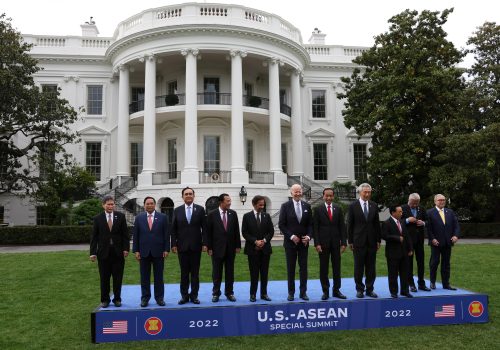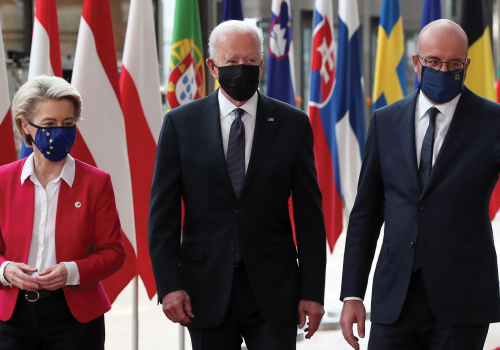TTC, IPEF, and the road to an Indo-Pacific trade deal: A new model
After nearly two years of uncertainty and speculation, the Biden administration’s “trade policy for the middle class” is taking shape. Exemplified by the US-EU Trade and Technology Council (TTC) and the Indo-Pacific Economic Framework for Prosperity (IPEF), its central thrust appears to be “beyond-the-border” issues, such as regulatory alignment and standard setting (especially on digital issues and emerging technologies), attempts to improve supply chain resilience, and efforts to promote high labor and environmental standards. However, the administration’s approach assiduously avoids elements contained in traditional free trade agreements (FTAs), such as the pursuit of new market access in the form of tariff reduction.
The Biden administration should be applauded for an agenda that seeks to work with an unprecedented number of allies and partners and includes novel flexibilities to accommodate varying levels of development. This approach has the potential to allow the United States to link its economy with more countries than ever before. As it develops these various initiatives, the administration must carefully consider how to coordinate them to ensure they are as complementary as possible and not working at cross purposes.
More fundamentally, the Biden administration should also raise the level of ambition within individual trade agreements like IPEF and seriously consider adding traditional market access components. Market access is critical to provide new opportunities for US businesses and workers as well as to create an incentive for other countries to “trade off” substantial economic reforms as part of the agreement. Ultimately, the administration will find it difficult to fulfill many of its priority objectives—linking supply chains with partners and allies, encouraging partners to open their markets and commit to US-level standards, and positioning the United States to better compete with China—without market access. However, even if the administration is not willing to embrace market access in the short term, it should include design features in these frameworks to enable them to serve as steppingstones to true FTAs with market access in the future.
Related content

At the intersection of economics, finance, and foreign policy, the GeoEconomics Center is a translation hub with the goal of helping shape a better global economic future.


